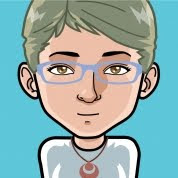If you are looking for alternative starting points for planning an integrated topic in the primary school – then a picture book could provide a very accessible way in. I think this particular book could provide a starting point for Year 2’s (6-7 year olds) to Year 4 or maybe even Year 5 (8 – 10 year olds).
First the book that you choose has to have a strong geographical theme running through it. My chosen book, `What if …’ is about recycling so it fits very nicely into the theme of ESD (Environment & Sustainable Development). This is a theme that is shared equally strongly with science and also with citizenship. So we have a very good basis for a geography/science/citizenship integrated topic.
Now I realise that all over the land in the world of the English primary school the words `we’re delivering a skills based curriculum’ are currently `hot’ but I want to argue here for thinking about concepts. We need to start with the `big ideas’ of a subject.
I want to start by explaining how to do this where geography is the lead subject. First I developed a planning grid of empty boxes with headings that focus on both geography’s `big ideas’. In terms of `big ideas’ I want to highlight PLACE, SPACE & SCALE as being the most important for primary geography though you’ll notice in my planning grid that I’ve linked together `place & scale’ and then `location & space’. On the exemplar sheet I’ve prioritised `environmental interaction (including ESD)’ as this is essentially what the book is about. Though I’ve also included `interdependence & connectedness’ – two very important ideas that were largely neglected in the current English National Curriculum programmes of study for geography, and then `changing human & physical processes’ and `cultural understanding & diversity’. On the blank planning sheet I have left the boxes under `curriculum links’ blank. Though as I read through the text of `What if …’ I realised that the book also embraced art, science and citizenship – so I added these headings onto my sheet.
So how did I use the planning sheet?
First I read through the book and listed all of the ideas that the book suggested to me. These are in black type.
Next I looked at these ideas and though about `activities’ and the kind of ideas that might be developed into activities and I listed these in blue type.
I haven’t done the next stage – but what I would do next is to choose three or four of these ideas/activities and develop them into an outline for a medium term plan.
If anyone uses this idea and adapts it for use with their own class I’d love to hear how it goes. Please add a comment or get in touch by e-mail. You’ll find contact details on the Geographical Association website.





